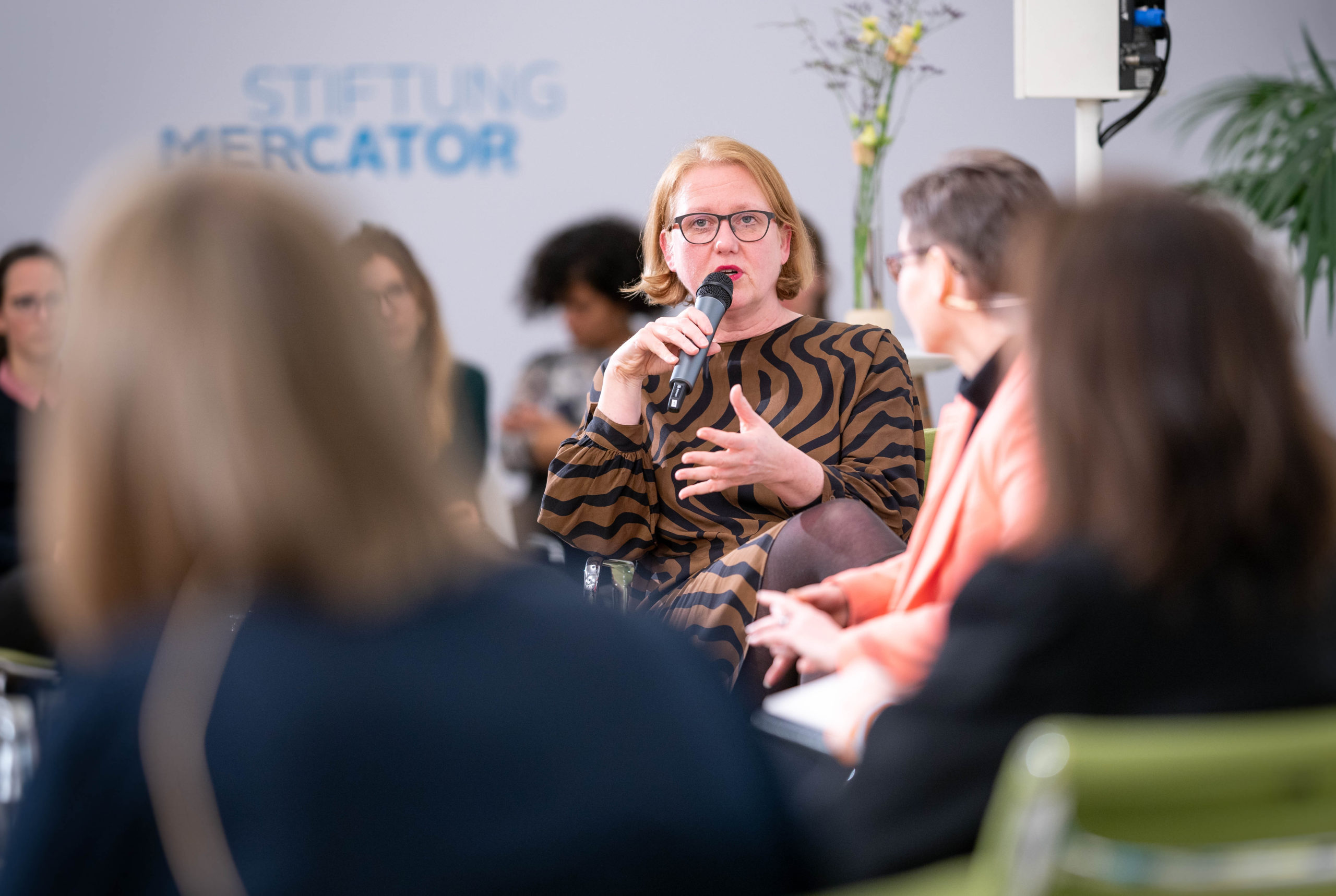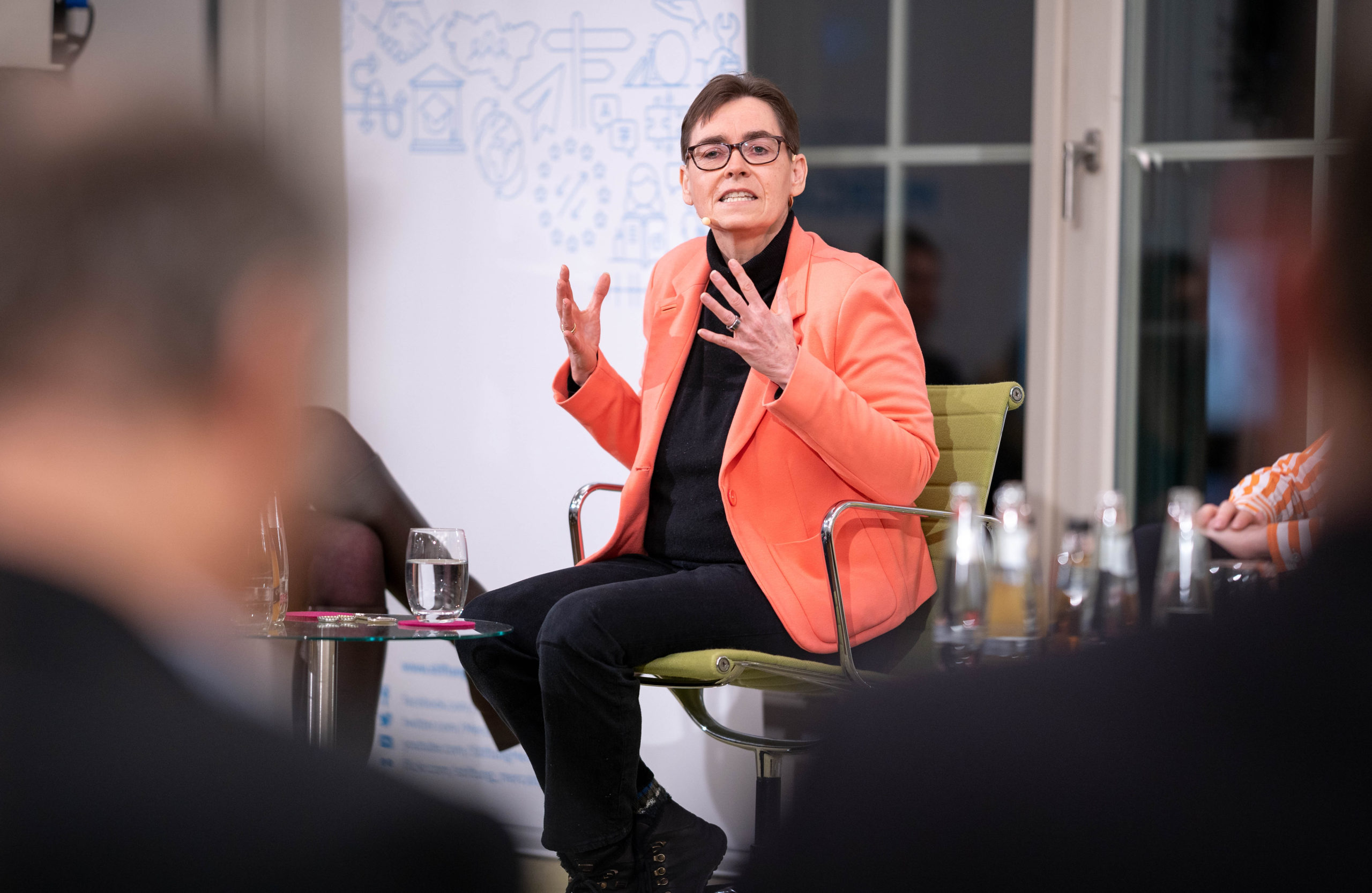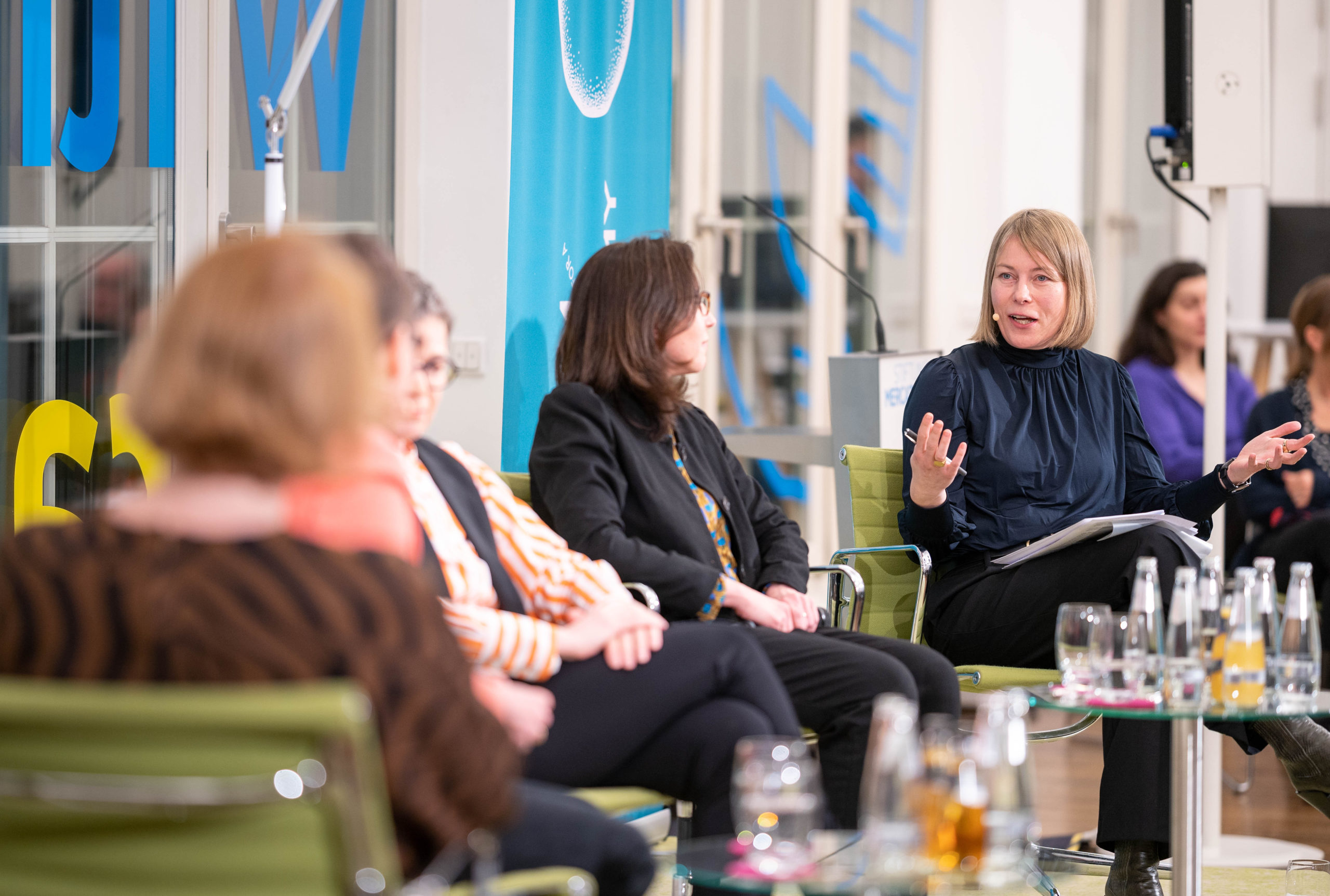INEQUALITY
Recap: Will the Gender Pay Gap disappear anytime soon?
Does the shortage of skilled workers offer the chance to finally shrink the pay gap or will the structural causes of the gender pay gap persist for the foreseeable future? We discussed this with Lisa Paus, Federal Minister for Family Affairs, on 14 March.
BY
MAREN BUCHHOLTZPUBLISHED
16. MARCH 2023READING TIME
5 MIN.
With a statistical wage gap between men and women of about 18%, the gender pay gap in Germany is one of the highest in Europe. Professions with a high proportion of women are less well paid than similarly demanding professions with a high proportion of men, and many women work part-time or in mini-jobs to raise children and care for relatives. Will the demographic development and the resulting shortage of skilled workers change the power relations in the labour market in favour of gender equality? And how can structural causes of women’s disadvantage in the labour market be reduced?
At our evening event on 14 March 2023 at the Mercator Center in Berlin, Federal Minister for Family Affairs Lisa Paus explained her perspective and the federal government’s plans. The subsequent panel discussion with journalists Sabine Rennefanz and Margaret Heckel and DIW economist Katharina Wrohlich as well as supervisory board member and manager Simone Menne focused not only on economic policy measures but also on a cultural change towards more gender equality.
In her keynote speech, Lisa Paus described increasing social inequality as well as rising rates in poverty among children and the elderly as signs that the market does not function on its own, but that it needs socio-ecological guard rails. She cited part-time work, outdated pay structures and tax disadvantages as determining structural causes of the wage and pension gap. A decisive factor why there has been no improvement in the past decades despite many efforts is the care work gap: On average, women still do about twice as much unpaid care work as men. The shorter working life, especially of mothers who work part-time and in mini-jobs for many years, is statistically reflected in a higher risk of poverty in old age. On average, female pensioners receive only about half of the average pension level for men in Germany.

The minister pointed out that many well-educated women would like to increase their hours, but that reconciling family and work is still proving difficult. According to estimates, about 840,000 more workers would be available on the labour market if mothers with children under 6 years were given better conditions to work full-time. Among the solutions, the Minister pointed to public infrastructure, such as in the area of daycare centers. The exemplary developments in Scandinavian countries also showed that state incentives for a more equitable distribution of parental leave could help mothers reenter the workforce full-time sooner. Lisa Paus underscored that a social debate on new working time models and on family-friendly corporate culture is highly desirable.
In addition, women’s participation in the labour market is to be promoted through the upcoming reform of the marital income tax scheme mentioned in the coalition agreement. At the same time, she stressed that higher labour force participation alone would not automatically lead to a smaller wage gap. The pay system should correct the oftentimes underestimated workload carried out in typical women’s occupations, such as the actual and literal heaving lifting that geriatric nurses undertake on a daily basis. Furthermore, the Pay Transparency Act needs to be reformed and more efforts are needed on a societal level to reduce the influence of gender stereotypes when it comes to study and career choices.
During the panel discussion, Margaret Heckel predicted that demographic change will strengthen women’s labour power and thus strengthen gender equality. According to her assessment, the scope of the worker shortage has not yet sufficiently reached public awareness in Germany. Especially in the low-wage sector, the share of jobs that cannot be replaced by automation, e.g. in the fields of health, care, and education, is particularly high. Therefore, women should be encouraged to change jobs more often, which should give them room to negotiate higher earnings and better working conditions.

"Demography is the friend of women."
Sabine Rennefanz stated that many women do not take kindly to being seen merely as a ‘silent reserve’. The hope for better bargaining power through higher labour demand can only be fulfilled if it is accompanied by clear progress towards gender equality both in working life and in partnership. To achieve this, traditional role models must be overcome. According to Rennefanz, it is crucial that men become more committed to gender equality in their everyday lives.

Simone Menne reported that traditional social norms and attitudes are an obstacle to career advancement. Women are often socialized in such a way that they shy away from competitive behaviour. Another obstacle to mothers’ career opportunities is the “presence culture” that is still prevalent in many German companies. If superiors exemplified a clear separation between work and family time in their everyday working lives, they would promote cultural change. In countries like Sweden, which achieve a better work-life balance, this has long been part of the common work culture.

"Companies should explicitly promote women and increase their visibility. Quotas do make a difference."
Katharina Wrohlich agreed with the basic diagnosis that culture is a major contributor to the structurally weak earnings prospects of mothers. Studies show that although social acceptance of maternal employment has increased, it is still limited to part-time models, and thus the “additional earner model” prevails in many marriages. Since reunification, surveys in eastern German states tend to show that attitudes are even converging towards the traditional model of mothers working part-time. As long as there is no structural change in care work, the differences in earnings will not shrink, because: “You don’t make a career in part-time work.” From her research, she was able to report that the provision of childcare, tax incentives, and quotas for female board members are effective measures to narrow the gender pay gap.

"Individual decisions do not take place in a vacuum."
Ultimately, the experts agreed, that it will take further government measures promoting higher female employment and societal change toward dismantling gender-specific stereotypes so that the shortage of skilled workers will in fact eventually lead to a smaller earnings gap – and hopefully not only after another century of slow progress.
